Ambient Electromagnetic Wave Energy Harvesting Using Human Body Antenna for Wearable Sensors
Abstract
1. Introduction
2. Power Density Distribution of AEMWs
2.1. Measurement Setup for AEMWs
2.2. Power Density Spectrum of AEMWs
3. Principle of HBA and Energy-Harvesting Interface
3.1. Antenna Structures Suitable for Energy Harvesting
3.2. Principle of the HBA
3.3. Prototype and Evaluation of Energy-Harvesting Interface
4. Evaluation of Reception Characteristics and Harvested Power of HBA
4.1. Evaluation of HBA Reception Characteristics Using Simulated AEMW Source
4.2. Estimation of Harvested Power of HBA in Actual Environment
4.3. Human Safety Evaluation
5. Conclusions
Author Contributions
Funding
Informed Consent Statement
Data Availability Statement
Conflicts of Interest
References
- Patel, S.; Park, H.; Bonato, P.; Chan, L.; Rodgers, M. A review of wearable sensors and systems with application in rehabilitation. J. NeuroEng. Rehabil. 2012, 9, 21. [Google Scholar] [CrossRef]
- Majumder, S.; Mondal, T.; Deen, M.J. Wearable Sensors for Remote Health Monitoring. Sensors 2017, 17, 130. [Google Scholar] [CrossRef]
- Vijayan, V.; Connolly, J.P.; Condell, J.; McKelvey, N.; Gardiner, P. Review of Wearable Devices and Data Collection Considerations for Connected Health. Sensors 2021, 21, 5589. [Google Scholar] [CrossRef]
- López, B.; Vázquez-Salceda, R.; Barreno, F. Multi-sensor wearable health device framework for real-time monitoring. Front. Hum. Neurosci. 2021, 15, 750591. [Google Scholar] [CrossRef]
- Muramatsu, D. Adaptive Modulation and Coding Control Based on Human Body Channel Characteristics Under Different WBAN Scenarios. Int. J. Sens. Sens. Netw. 2025, 13, 12–21. [Google Scholar] [CrossRef]
- Muramatsu, D.; Sasaki, Y. 2.4 GHz/5.6 GHz Dual-use Wearable Patch Antenna Integrated with Electrodes and Parasitic Element for Wireless Body Area Network. IEEJ Trans. Electr. Electron. Eng. 2024, 19, 154–156. [Google Scholar] [CrossRef]
- Muramatsu, D.; Kodama, M. Signal transmission analysis in implantable human body communication for abdominal medical devices. AIP Adv. 2023, 13, 085022. [Google Scholar] [CrossRef]
- Chong, Y.-W.; Ismail, W.; Ko, K.; Lee, C.-Y. Energy Harvesting for Wearable Devices: A Review. IEEE Sens. J. 2019, 19, 9047–9062. [Google Scholar] [CrossRef]
- Tesema, W.; Jimma, W.; Khan, M.I.; Stiens, J.; da Silva, B. A Taxonomy of Low-Power Techniques in Wearable Medical Devices for Healthcare Applications. Electronics 2024, 13, 3097. [Google Scholar] [CrossRef]
- Qaim, W.B.; Ometov, A.; Molinaro, A.; Lener, I.; Campolo, C.; Lohan, E.S.; Nurmi, J. Towards Energy Efficiency in the Internet of Wearable Things: A Systematic Review. IEEE Access 2020, 8, 175412–175435. [Google Scholar] [CrossRef]
- Roundy, S.; Wright, P.K.; Rabaey, J.M. A study of low level vibrations as a power source for wireless sensor nodes. Comput. Commun. 2003, 26, 1131–1144. [Google Scholar] [CrossRef]
- Mitcheson, P.D.; Yeatman, E.M.; Rao, G.K.; Holmes, A.S.; Green, T.C. Energy harvesting from human and machine motion for wireless electronic devices. Proc. IEEE 2008, 96, 1457–1486. [Google Scholar] [CrossRef]
- Priya, S.; Inman, D.J. Energy Harvesting Technologies; Springer: New York, NY, USA, 2009. [Google Scholar] [CrossRef]
- Polman, A.; Knight, M.; Garnett, E.C.; Ehrler, B.; Sinke, W.C. Photovoltaic materials: Present efficiencies and future challenges. Science 2016, 352, aad4424. [Google Scholar] [CrossRef] [PubMed]
- Kaltenbrunner, M.; White, M.S.; Głowacki, E.D.; Sekitani, T.; Someya, T.; Sariciftci, S.N.; Bauer, S. Ultrathin and lightweight organic solar cells with high flexibility. Nat. Commun. 2012, 3, 770. [Google Scholar] [CrossRef]
- Saifi, S.; Xiao, X.; Cheng, S.; Guo, H.; Zhang, J.; Müller-Buschbaum, P.; Zhou, G.; Xu, X. An ultraflexible energy harvesting—Storage system for wearable applications. Nat. Commun. 2024, 15, 6546. [Google Scholar] [CrossRef]
- Lei, M.; Zhu, S.; Liu, C.; Gao, J.; Zhang, Z.; Peng, Y.; Chen, J.-L.; Gao, Y.; Liang, J.; Mori, T. Comfortable wearable thermoelectric generator with high output power. Nat. Commun. 2024, 15, 8516. [Google Scholar] [CrossRef]
- Digregorio, G.; Pierre, H.; Laurent, P.; Redouté, J.-M. Modeling and experimental characterization of an electromagnetic energy harvester for wearable and biomedical applications. IEEE Access 2020, 8, 175436–175447. [Google Scholar] [CrossRef]
- Yoo, J. Body Area Network: Connecting and powering things together around the human body. IEEE Solid-State Circuits Mag. 2023, 15, 49–58. [Google Scholar] [CrossRef]
- Alkhalaf, H.Y.; Ahmad, M.Y.; Ramiah, H. Self-Sustainable Biomedical Devices Powered by RF Energy: A Review. Sensors 2022, 22, 6371. [Google Scholar] [CrossRef]
- Rong, G.; Zheng, Y.; Sawan, M. Energy Solutions for Wearable Sensors: A Review. Sensors 2021, 21, 3806. [Google Scholar] [CrossRef]
- Visser, H.J.; Reniers, A.C.F.; Theeuwes, J.A.C. Ambient RF energy scavenging: GSM and WLAN power density measurements. In Proceedings of the 2008 38th European Microwave Conference (EuMC), Amsterdam, The Netherlands, 27–31 October 2008; pp. 721–724. [Google Scholar] [CrossRef]
- Chalermwisutkul, S.; Inam, M. Estimation of Harvested RF Energy Based on Survey of Ambient RF Energy Sources. Int. J. Antennas Propag. 2022, 2022, 1755053. [Google Scholar] [CrossRef]
- Vyas, R.J.; Cook, B.B.; Kawahara, Y.; Tentzeris, M.M. E-WEHP: A Batteryless Embedded Sensor-Platform Wirelessly Powered From Ambient Digital-TV Signals. IEEE Trans. Microw. Theory Tech. 2013, 61, 2491–2505. [Google Scholar] [CrossRef]
- Bito, J.; Hester, J.G.; Tentzeris, M.M. Ambient RF Energy Harvesting From a Two-Way Talk Radio for Flexible Wearable Wireless Sensor Devices Utilizing Inkjet Printing Technologies. IEEE Trans. Microw. Theory Tech. 2015, 63, 4533–4543. [Google Scholar] [CrossRef]
- Du, J.; Wang, R.; Zheng, P. A 2.4 GHz High-Efficiency Rectifier Circuit for Ambient Low Electromagnetic Power Harvesting. Sensors 2024, 24, 6854. [Google Scholar] [CrossRef]
- Onishi, T.; Esaki, K.; Tobita, K.; Ikuyo, M.; Taki, M.; Watanabe, S. Large-Area Monitoring of Radiofrequency Electromagnetic Field Exposure Levels from Mobile Phone Base Stations and Broadcast Transmission Towers by Car-Mounted Measurements around Tokyo. Electronics 2023, 12, 1835. [Google Scholar] [CrossRef]
- Keysight Technologies. N6850A Broadband Omnidirectional Antenna, Version 1.0.0; Data sheet; Keysight Technologies: Santa Rosa, CA, USA, 2020. [Google Scholar]
- Fallahpour, M.B.; Zoughi, R. Antenna Miniaturization Techniques: A Review of Topology- and Material-Based Methods. IEEE Antennas Propag. Mag. 2018, 60, 38–50. [Google Scholar] [CrossRef]
- Pozar, D.M. Microstrip antennas. Proc. IEEE 1992, 80, 79–91. [Google Scholar] [CrossRef]
- Luukkonen, O.; Ikonen, P.; Tretyakov, S. Microstrip antenna miniaturization using partial dielectric material filling. Microw. Opt. Technol. Lett. 2006, 48, 1073–1076. [Google Scholar] [CrossRef]
- Lee, B.; Harackiewicz, F.J. Miniature microstrip antenna with a partially filled high-permittivity substrate. IEEE Trans. Antennas Propag. 2002, 50, 1160–1162. [Google Scholar] [CrossRef]
- Kibret, B.; Teshome, A.K.; Lai, D.T.H. Characterizing the Human Body as a Monopole Antenna. IEEE Trans. Antennas Propag. 2015, 63, 4384–4392. [Google Scholar] [CrossRef]
- Rueda Linares, S.; Martin Garcia, D.; Yan, S.; Volski, V.; Vandenbosch, G.A.E. The hantenna: Experimental assessment of the human hand as an antenna. IET Microw. Antennas Propag. 2018, 12, 773–778. [Google Scholar] [CrossRef]
- Li, J.; Nie, Z.; Liu, Y.; Wang, L.; Hao, Y. Evaluation of Propagation Characteristics Using the Human Body as an Antenna. Sensors 2017, 17, 2878. [Google Scholar] [CrossRef] [PubMed]
- Mao, J.; Zhang, Z. Investigation on the Human Body as A Monopole Antenna for Energy Harvesting. In Proceedings of the 2020 42nd Annual International Conference of the IEEE Engineering in Medicine & Biology Society (EMBC), Montreal, QC, Canada, 20–24 July 2020; pp. 4169–4174. [Google Scholar] [CrossRef]
- Kanematsu, R.; Fujii, K.; Okumura, Y.; Umehira, M. Performance evaluation of antenna using the human body as an element. In Proceedings of the 2022 IEEE 11th Global Conference on Consumer Electronics (GCCE), Osaka, Japan, 18–21 October 2022; pp. 196–197. [Google Scholar] [CrossRef]
- Mao, J.; Zhao, J.; Yang, H.; Zhao, B. Using human body as a monopole antenna for energy harvesting from ambient electromagnetic energy. In Proceedings of the 2017 IEEE Biomedical Circuits and Systems Conference (BioCAS), Turin, Italy, 19–21 October 2017; pp. 1–4. [Google Scholar] [CrossRef]
- Hyoung, C.H.; Hwang, J.H.; Lee, J.H.; Kang, S.W.; Kim, Y.T. Energy harvesting from electromagnetic interference induced in the human body. Electron. Lett. 2016, 52, 1881–1883. [Google Scholar] [CrossRef]
- Cui, M.; Wang, Q.; Xiong, J. Bracelet+: Harvesting the Leaked RF Energy in VLC with Wearable Bracelet Antenna. In Proceedings of the 20th ACM Conference on Embedded Networked Sensor Systems (SenSys ’22), New York, NY, USA, 6–9 November 2022; pp. 250–262. [Google Scholar] [CrossRef]
- Hwang, J.H.; Hyoung, C.H.; Park, K.H.; Kim, Y.T. Energy harvesting from ambient electromagnetic wave using human body as antenna. Electron. Lett. 2013, 49, 149–151. [Google Scholar] [CrossRef]
- Jokela, K.; Puranen, L.; Gandhi, O.P. Radio frequency currents induced in the human body for medium-frequency/high-frequency broadcast antennas. Health Phys. 1994, 66, 237–244. [Google Scholar] [CrossRef]
- Muramatsu, D.; Sasaki, K. Input Impedance Analysis of Wearable Antenna and Experimental Study with Real Human Subjects: Differences between Individual Users. Electronics 2021, 10, 1152. [Google Scholar] [CrossRef]
- Yu, W.; Yang, S.; Tang, C.L.; Tu, D. Accurate simulation of the radiation performance of a mobile slide phone in a hand-head position. IEEE Antennas Propag. Mag. 2010, 52, 168–177. [Google Scholar] [CrossRef]
- Schrader, R.; Ax, T.; Röhrig, C.; Fühner, C. Advertising power consumption of Bluetooth low energy systems. In Proceedings of the 2016 3rd International Symposium on Wireless Systems Within the Conferences on Intelligent Data Acquisition and Advanced Computing Systems (IDAACS-SWS), Offenburg, Germany, 26–27 September 2016; pp. 62–68. [Google Scholar] [CrossRef]
- Li, S.; Liu, X.; Calhoun, B.H. A 32 nA fully autonomous multi-input single-inductor multi-output energy-harvesting and power-management platform with 1.2 × 105 dynamic range, integrated MPPT, and multi-modal cold start-up. In Proceedings of the 2022 IEEE International Solid-State Circuits Conference (ISSCC), San Francisco, CA, USA, 20–26 February 2022; pp. 1–3. [Google Scholar] [CrossRef]
- Nagaoka, T.; Watanabe, S.; Sakurai, K.; Kunieda, E.; Watanabe, S. Development of High-Resolution Whole-Body Voxel Models of Average Japanese Adults and RF Dosimetry Applications. Phys. Med. Biol. 2004, 49, 1–15. [Google Scholar] [CrossRef]
- International Commission on Non-Ionizing Radiation Protection (ICNIRP). Guidelines for limiting exposure to electromagnetic fields (100 kHz to 300 GHz). Health Phys. 2020, 118, 483–524. [Google Scholar] [CrossRef]
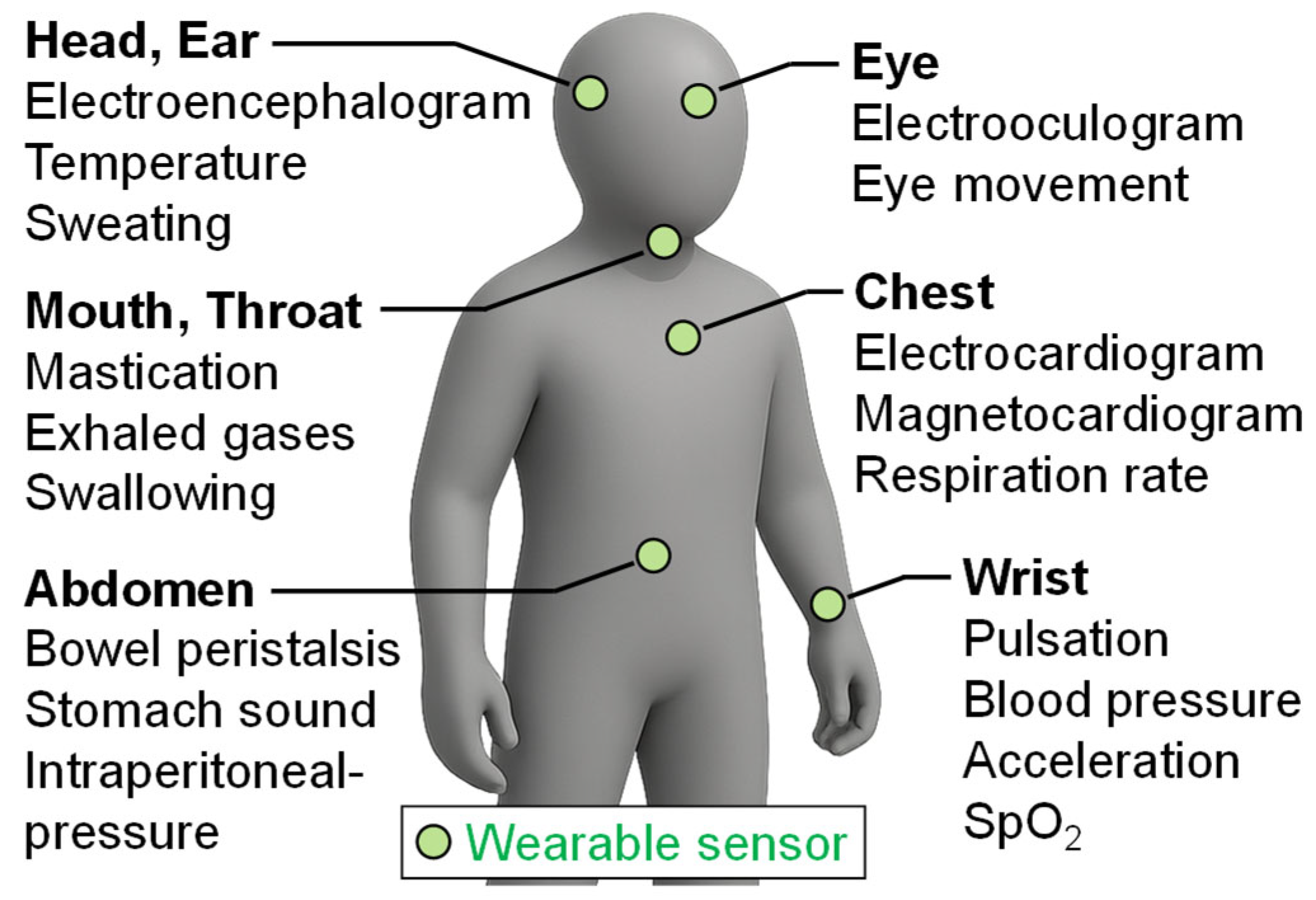
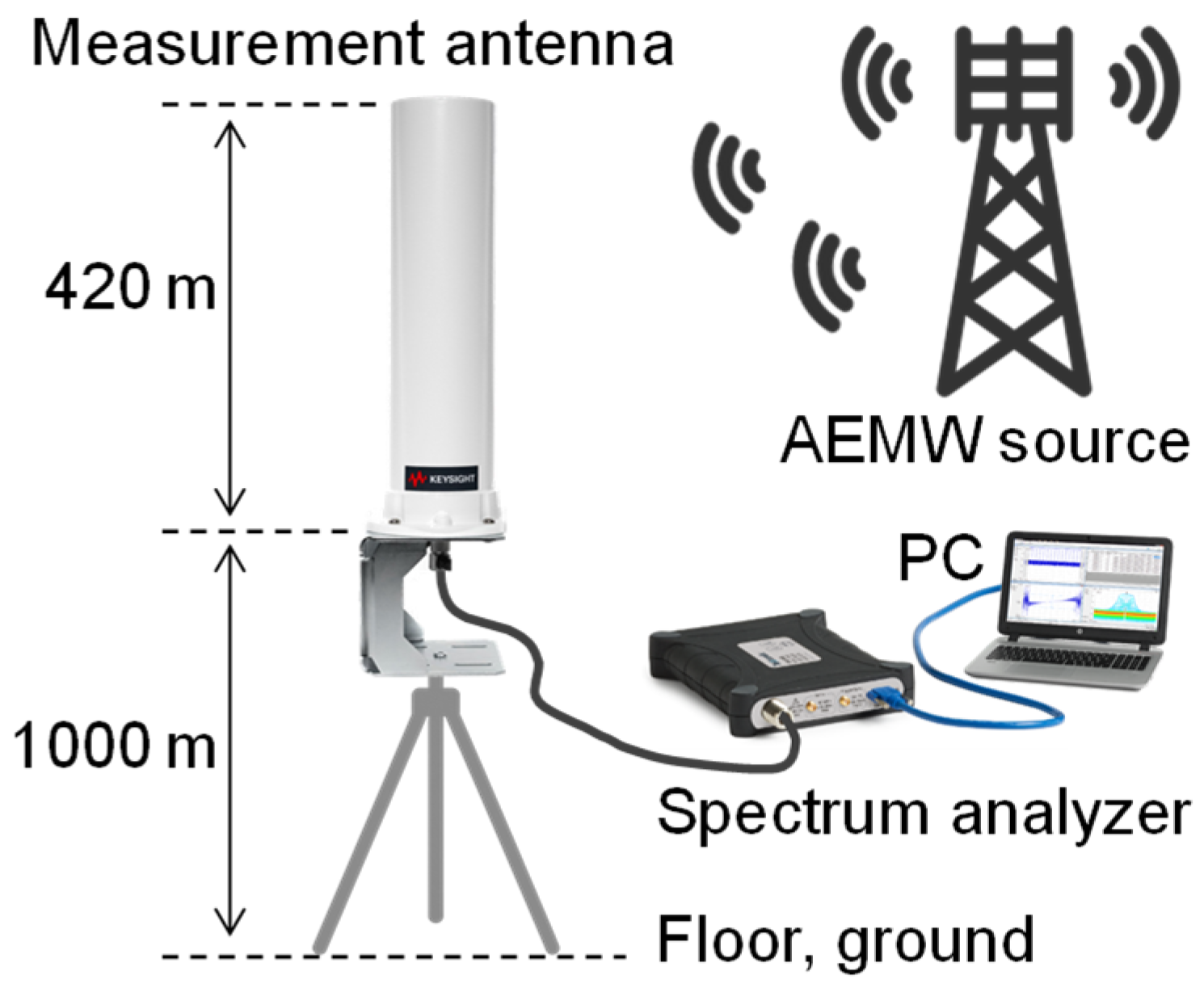



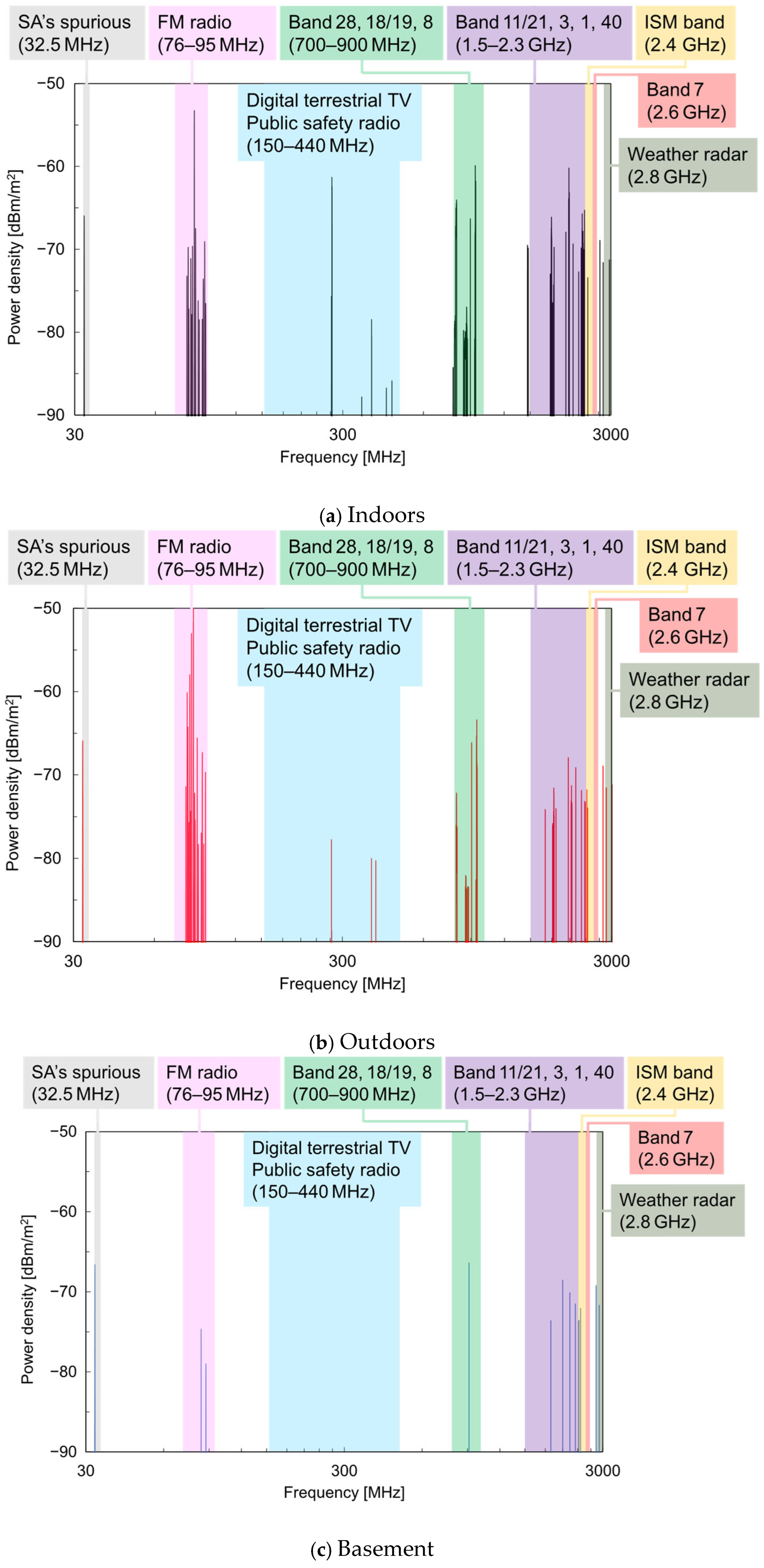
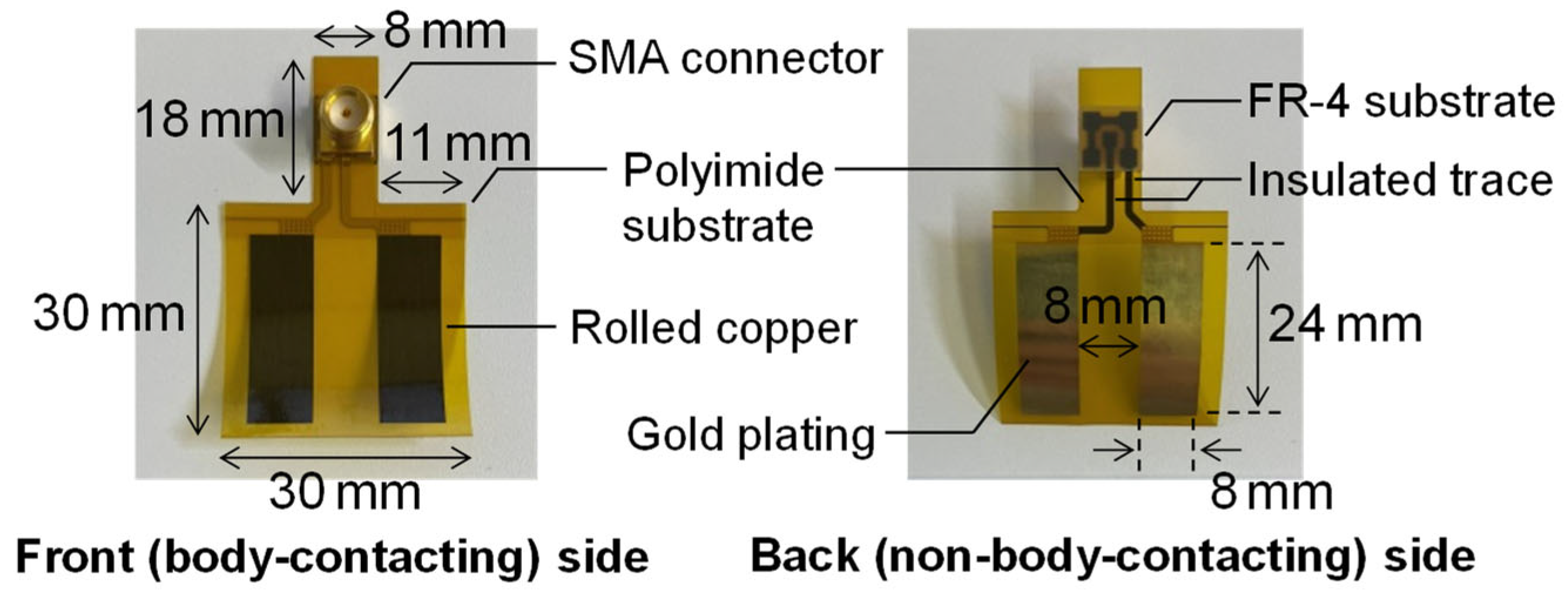
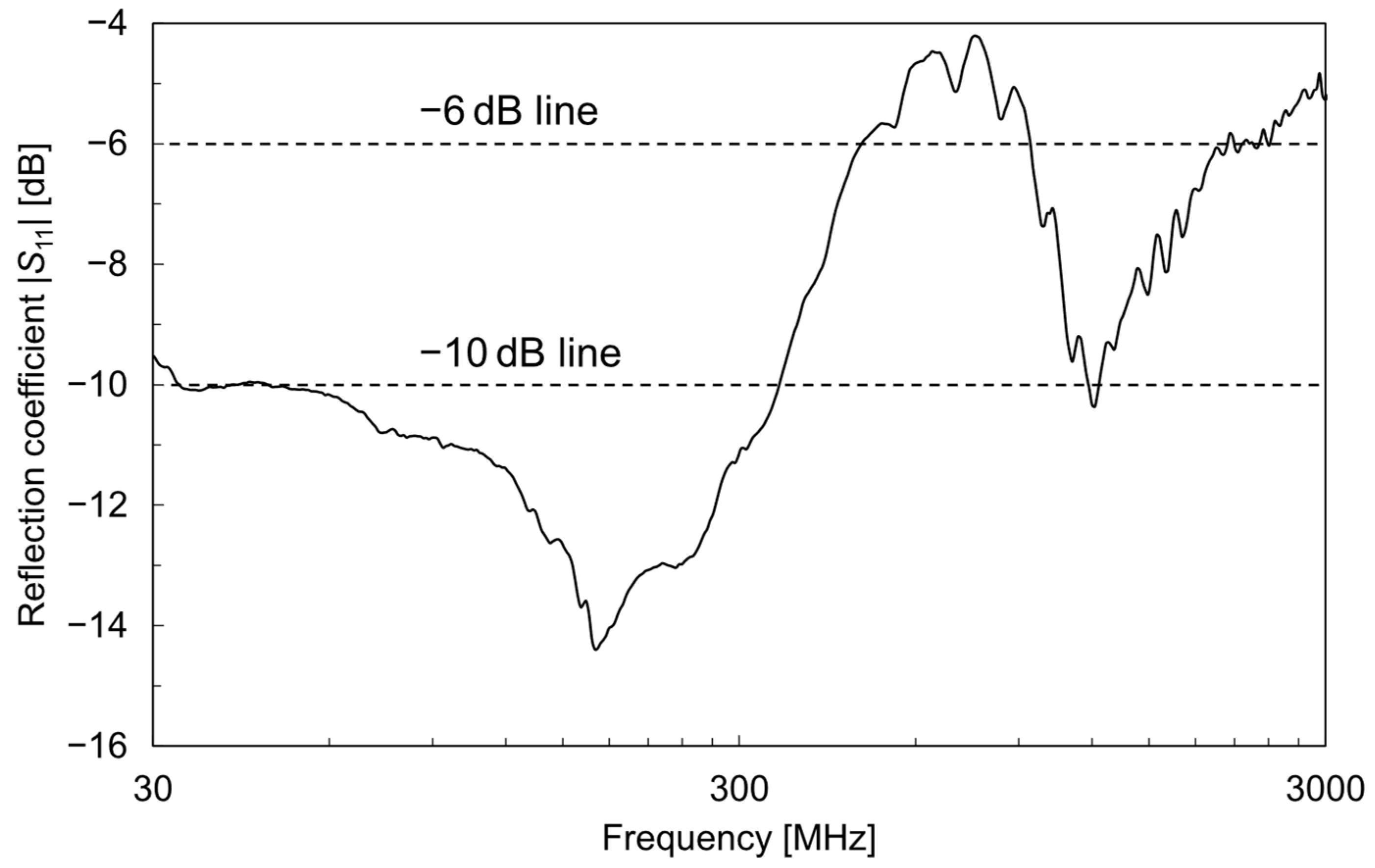
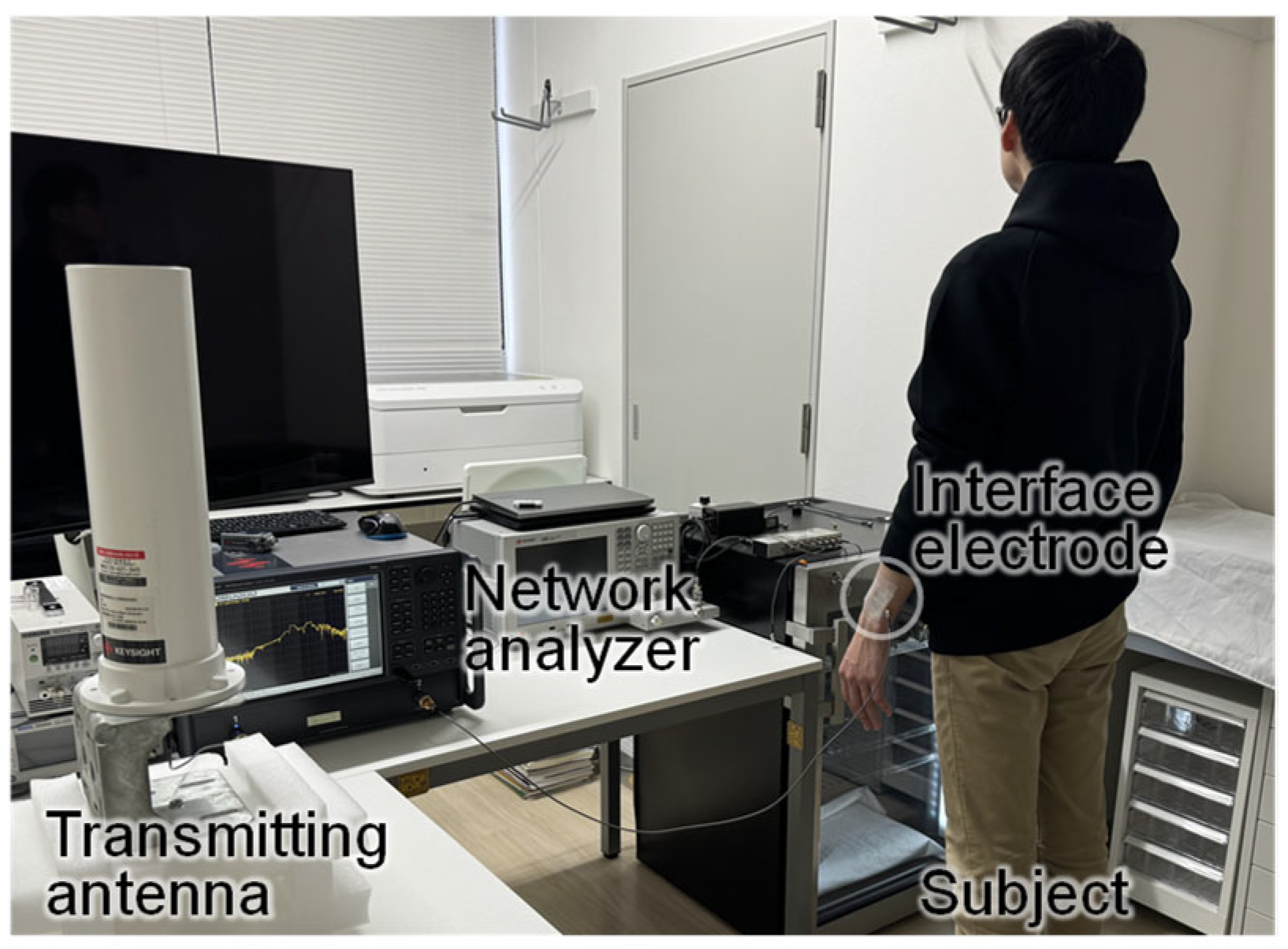
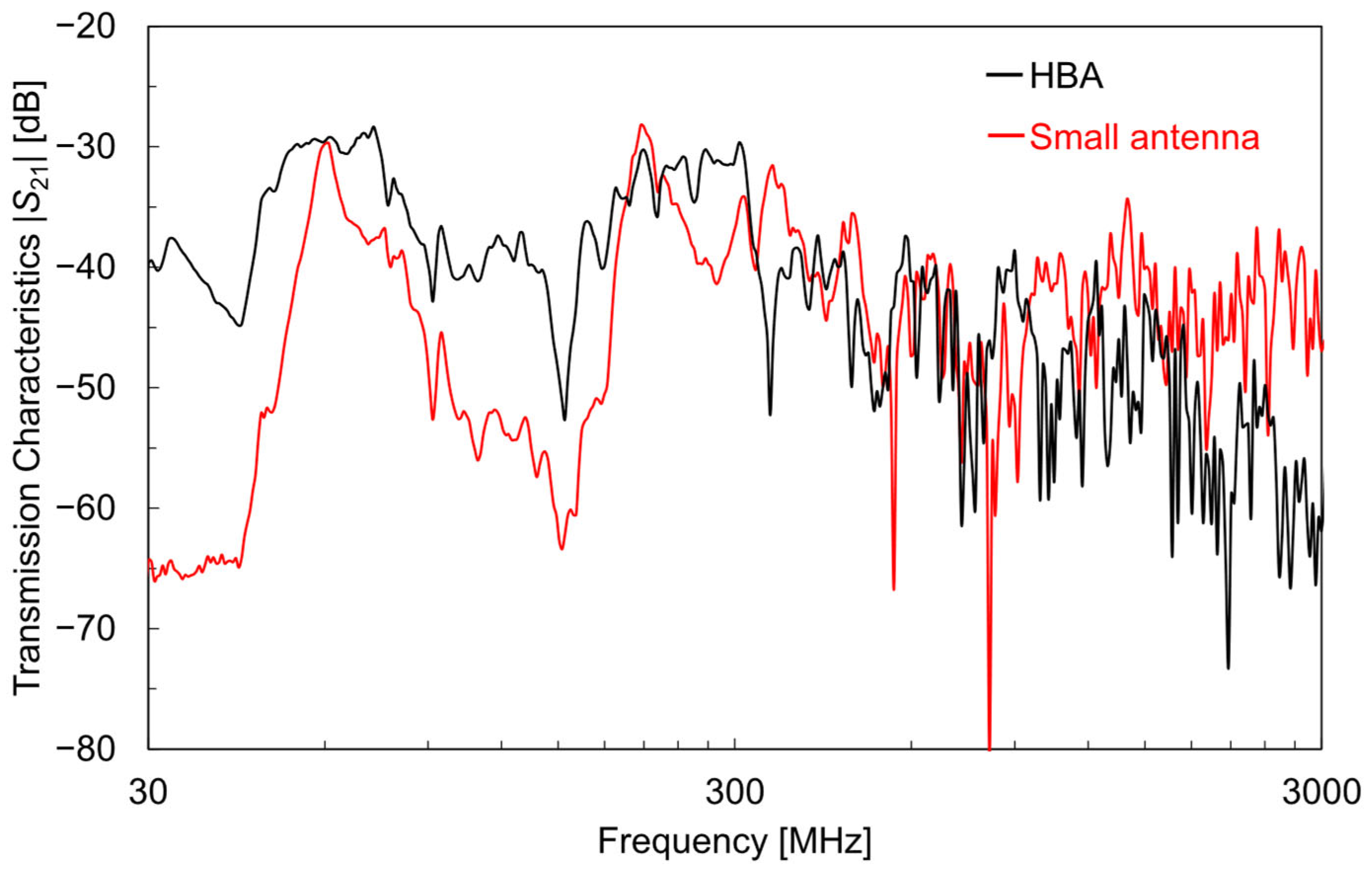

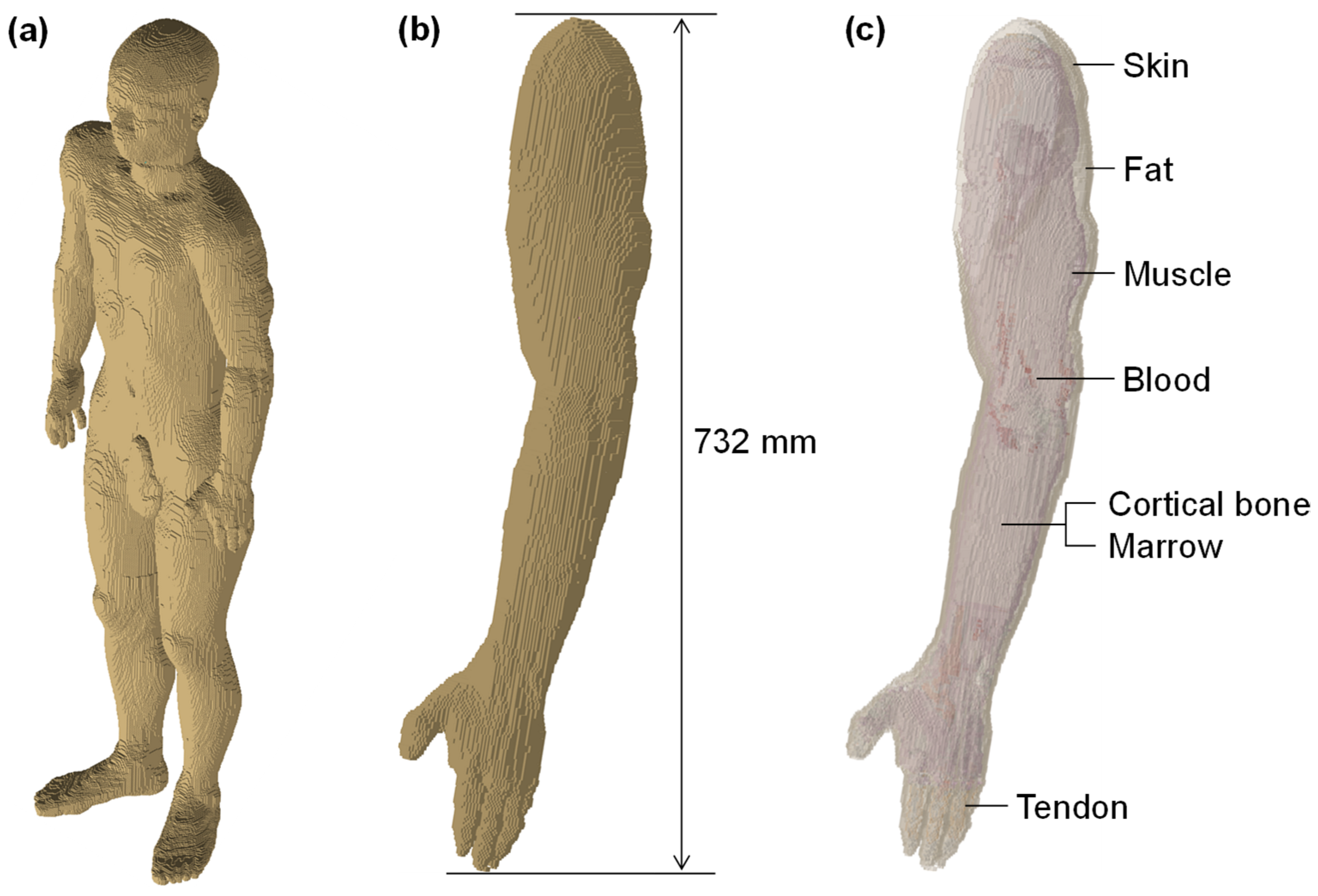
Disclaimer/Publisher’s Note: The statements, opinions and data contained in all publications are solely those of the individual author(s) and contributor(s) and not of MDPI and/or the editor(s). MDPI and/or the editor(s) disclaim responsibility for any injury to people or property resulting from any ideas, methods, instructions or products referred to in the content. |
© 2025 by the authors. Licensee MDPI, Basel, Switzerland. This article is an open access article distributed under the terms and conditions of the Creative Commons Attribution (CC BY) license (https://creativecommons.org/licenses/by/4.0/).
Share and Cite
Muramatsu, D.; Amano, K. Ambient Electromagnetic Wave Energy Harvesting Using Human Body Antenna for Wearable Sensors. Sensors 2025, 25, 4689. https://doi.org/10.3390/s25154689
Muramatsu D, Amano K. Ambient Electromagnetic Wave Energy Harvesting Using Human Body Antenna for Wearable Sensors. Sensors. 2025; 25(15):4689. https://doi.org/10.3390/s25154689
Chicago/Turabian StyleMuramatsu, Dairoku, and Kazuki Amano. 2025. "Ambient Electromagnetic Wave Energy Harvesting Using Human Body Antenna for Wearable Sensors" Sensors 25, no. 15: 4689. https://doi.org/10.3390/s25154689
APA StyleMuramatsu, D., & Amano, K. (2025). Ambient Electromagnetic Wave Energy Harvesting Using Human Body Antenna for Wearable Sensors. Sensors, 25(15), 4689. https://doi.org/10.3390/s25154689






